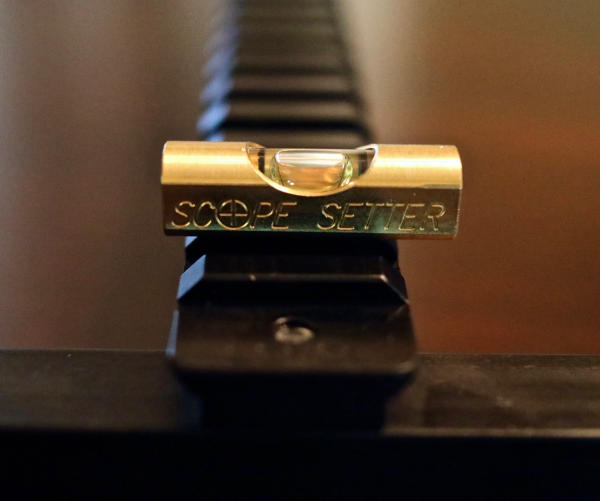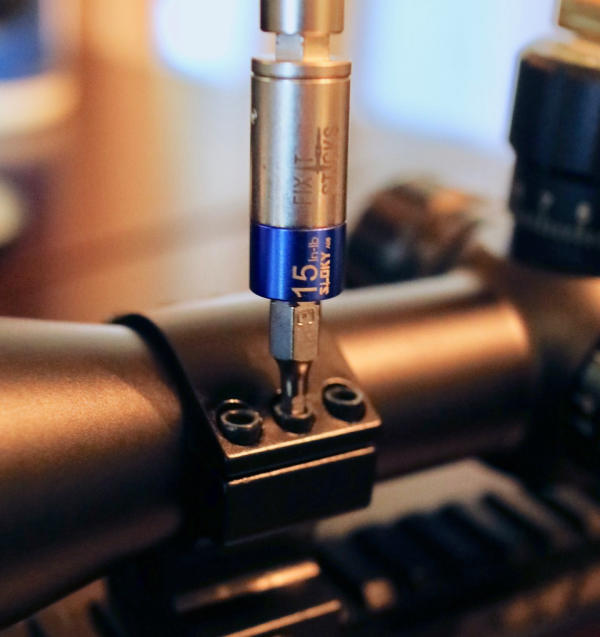During my recent visits to gun manufacturers, I’ve been fortunate enough to try out several of their new (and still embargoed) rifles. Afterwards, I’m always amazed at the fact I seem to shoot their long guns better than my own. While visit SIG, I made that offhand remark to one of their Academy long-range instructors.
His response wasn’t what I expected. “You’re a decent enough ‘trigger monkey’ so I’d say there’s something else that’s the cause,” he laughed, using the term I use for writers shooting equipment that’s been setup by professional long-range shooters, “I’d suspect the problem’s in your scope setups. It’s where 99% of all shooters get off on the wrong foot.”

A pair of tool kits from Fix It Sticks can give you virtually anything you need to keep your MSR and your optics rocking along correctly. The AR-15 kit (top, MSRP $100) contains specialized scrapers and the deluxe field kit (bottom, MSRP $180) can handle virtually everything else that’s likely to work loose in the field.
|
Since he’d already diagnosed another chronic problem of mine, I decided when I got home I’d check the scopes on a couple of my rifles at the opposite ends of my calibers: a DRD Tactical .338 Lapua with a Riton Optics RT-S Mod 7 4-20x50mm scope and a .22 caliber Ruger 10/22 with a Redfield Battlezone Tac.22 2-7x34mm scope.
Both were solid at mid-ranges, but misses at longer distances had convinced me something wasn’t quite right in their setups.
But checking would mean better tools- and techniques.
Rifle setup doesn’t get a lot of fanfare at my house. I generally drop a rifle into a rest, eyeball it horizontal, attach the scope, set the eye relief, “adjust” the crosshairs using a convenient line on my wall, screw it all down, and head to the range.
My instructor wasn’t the only one who already suspected setup might be part of my problem.
While we were in SIG’s pro shop, everyone - including the instructors - had oohed and aahed over a pair of diminutive tool kits from Fix It Stick (wwwfixitsticks.com). One was just for MSRs; the second was described as a “Field Maintenance Kit” that contained a variety of tools - including miniature torque limiters ranging from 15 to 65 inch/pounds - especially for making certain everything was tightened into specifications in the field.
Another of SIG’s instructors had already told me that if I’d not been torquing my mounts to the proper settings, he guaranteed that to be part of my accuracy problem.
That was recommendation enough for me. And he didn’t steer me wrong. If you’re looking for ultra-compact toolkits, you might want to visit www.fixitsticks.com and check the line out. Their simple tools use an ingenious t-handle idea to offer high-quality tools that are also lightweight and portable.
Turns out I already had the perfect bench accessory to make certain things were up to plumb -starting with my scope mounts. At SHOT Show last year, one of the guys from Inventure Engineering and Machining (www.inventeng.com) had given me a device called a Scope Setter. If I’d paid more attention after SHOT, I might have minimized some of the self-inflicted misses that may have been the result of my haphazard scope mounting techniques.


It’s another device so simple on the surface that you miss the genius behind it.
You have to get your bases level relative to the rail on your rifle. Otherwise, you’re starting out of whack. And as we all know, the further out you shoot, the more small errors multiply into big misses.
This is the first time I’ve ever actually self-diagnosed and remediated an equipment issue. And the work was done at my desk, not on my gun bench. I removed the scopes and bases from the rifles in the shop, locked the rifles back in the safe, then brought the scopes and bases into the office.
Then I mounted each of them on my pre-leveled Scope Setter.
It was an eye-opening experience.
When mounted on a truly level rail, neither scope was anywhere close to level. And if you’re barrel’s not directly under your crosshairs, the x-ring is never in danger.
And applying the torque limiters on the FixIt Sticks, I realized my definition of “level” wasn’t the only problem.
The tension differences between individual screws was noticeable. As a drummer, I know uneven tension creates tonality problems in drums.
Scopes, like drums, require uniformity to produce repeatable results.

So I re-started the mounting process for both scopes. And it’s taken longer to describe what I did that it did to actually do it. From that point, it was a simple matter of remounting the scopes on the rifles (correctly torquing the cross bolts this time) and heading to the range.
The differences were, well, eye-opening. Groups tightened with both rifles- including shorter distances.
From a rest, I got tighter groups at every distance- but especially in the sweet spots of both these very different rifles. Now, I’m confident that these rifles are correctly setup so the optics are actually increasing my chances for hits, rather than guaranteeing I’ll miss- even if I do my part correctly.
But for every upside, there’s a balancing downside. Now, I realize I have to make time to remove, re-level and re-mount every optic in my safe.
Actually, I’m looking forward to it. Who doesn’t get excited at the thoughts of shooting better, right?
—Jim Shepherd